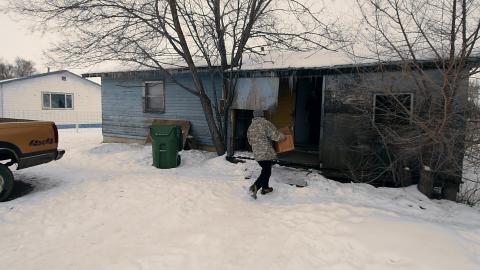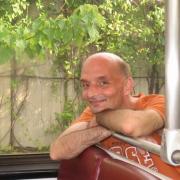
They are forgotten: Hunger and homelessness in South Dakota
Do poverty, hunger and homelessness exist when there is no one around to see? A tiny South Dakota town that probably 99.99 percent of Americans have never heard of is living testimony that the answer to that question is an emphatic yes.
Located in the poorest county in America, the enclave of Eagle Butte, South Dakota, population 1,350, is out in the middle of nowhere. Unless, of course, you happen to live there. It is 100 miles from anything resembling a mid-sized town (Pierre) and 300 miles from the state’s largest metropolitan area (Sioux Falls).
Life on this Native American reservation in Eagle Butte is hard scrabble. The temperature in the winter can fall to 20 degrees below zero and in the past year or two, several people have died of exposure. Unemployment in the best of times is extraordinarily high – in the winter, when the South Dakota prairie land freezes and construction jobs dry up, the jobless rate in the surrounding area can reach as high as 90 percent.
Enter the Mustard Seed: a nonprofit entity that strives to feed people and provide shelter from the cold. The Mustard Seed offers hope, pride and help – and up to 250 meals a day when the end of the month approaches and SNAP benefits are exhausted.
Chad Phillips is a professional photographer by trade, having been honored in 2014 as South Dakota Photographer of the Year. Today he is combining his photography and videography work with his desire to help the Mustard Seed grow and prosper – or at least better meet the acute need that exists in this impoverished Native American community.
Chad caught up with Voices for Human Needs during the recent Anti-Hunger Policy Conference, sponsored by Food Research and Action Center and Feeding America. He talked to us about his newly created video, They Are Forgotten, made as part of an effort to publicize the Mustard Seed and its work. Here’s how the video begins:
“Imagine going home to sleep but you have no house. If you are lucky you might have a tent or maybe a piece of cardboard to lay on, where owning a blanket is a luxury. You lay down freezing to death, your body shakes because you are cold and hungry. You couldn’t eat today because there was no place open to feed you. You wake up the next morning with your only goal to find some place warm and hoping for something to eat.”
It was around a year ago that Chad first learned of the Mustard Seed; a friend of his from church had asked him if he might tag along on a trip there with an eye to making a video about the project.
“He had no expectations, no direction, only knew he wanted a video to raise money for the Mustard Seed,” Chad recalls. “So going into it, I had to really have an open mind. What was it I was going to video? What did this place look like? What was the purpose? I was clueless. After arriving in Eagle Butte, I started to make friends with a number of people and began video-recording the volunteers serving lunch. Before I knew it, I was conducting impromptu interviews and visiting homeless people in hotels and outdoors. By the time we left, I was very emotional and humbled by the stories I had seen and heard.”
Chad continues:
“Over the next few months I voluntarily visited Eagle Butte to video-record more stories and visit with people to get a better understanding of the issues on the reservation. The video clips really sat untouched until I was mentally ready and knew what the purpose of a film about the Mustard Seed would be.”
In this regard, the video speaks for itself. It is almost as if all Chad had to do was turn on the camera:
“Our society looks anxiously over the distant horizon to help others in need half a world away. Yet we ignore people in our own backyard who every day go hungry or are looking for a safe place to sleep. In urban areas there are shelters, missions and homes supported by the larger community. In larger cities there are simply more resources available to the homeless and hungry than in rural areas.
“People of all races find their way to Eagle Butte looking for food, shelter, hope and a community. Desperate for a sustainable way of life. Too often the outside world’s view of life on the reservation is clouded. We think the tribes are funded with an abundance of money from the federal government. Natives are given monthly checks to live on. Housing is free for those on the reservation. Life is grand, right? That couldn’t be further from the truth.”
Right now, it appears as if there is little that can be done in Congress or at the federal level to help the Mustard Seed. The agency falls between a rock and a hard place: the federal government passes money for subsistence on to the tribal government, which in turn sets a budget. The Mustard Seed receives no money from the tribal government, and the feds defer to the tribal government in determining how the little money there is should be spent.
As it is now, the Mustard Seed relies on donations from the community and from the churches. But these donations fall woefully short – there are times when the Mustard Seed cannot open its doors and serve meals due to a lack of food.
To learn how you can help the Mustard Seed, visit www.theyareforgotten.com



The views and opinions expressed in this post are those of the author(s) and do not necessarily reflect those of MomsRising.org.
MomsRising.org strongly encourages our readers to post comments in response to blog posts. We value diversity of opinions and perspectives. Our goals for this space are to be educational, thought-provoking, and respectful. So we actively moderate comments and we reserve the right to edit or remove comments that undermine these goals. Thanks!